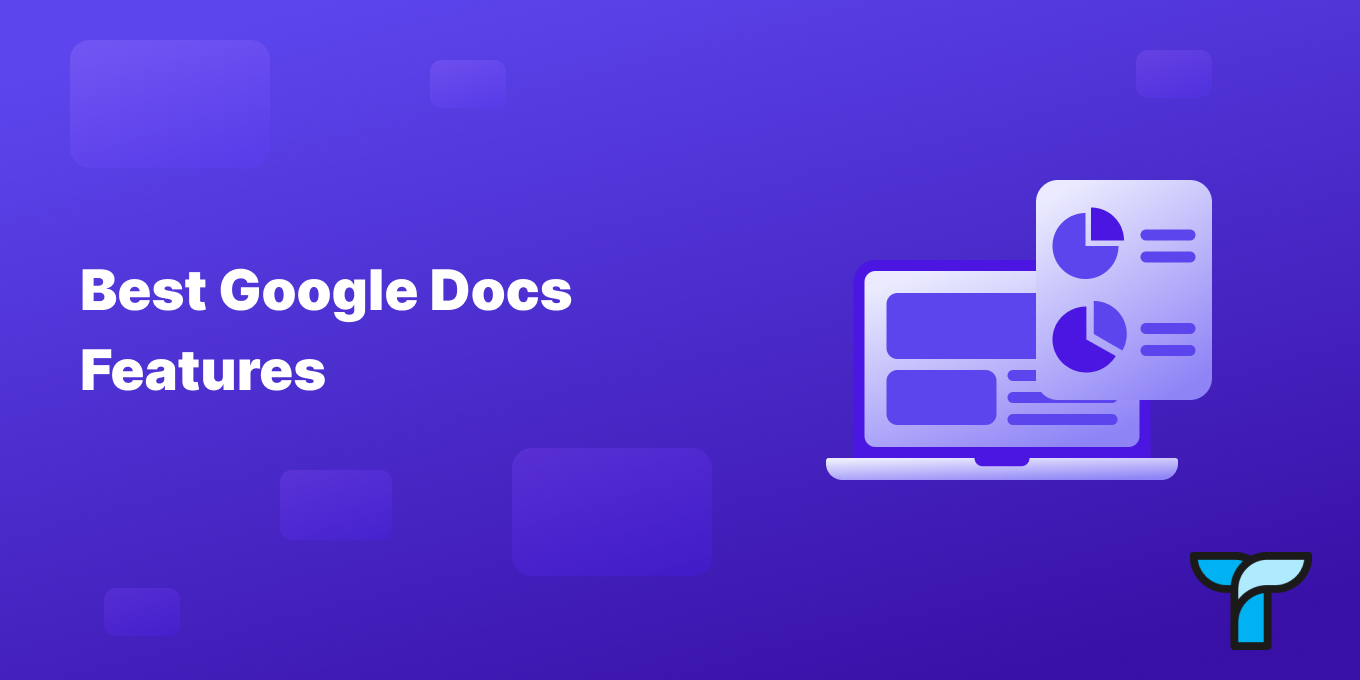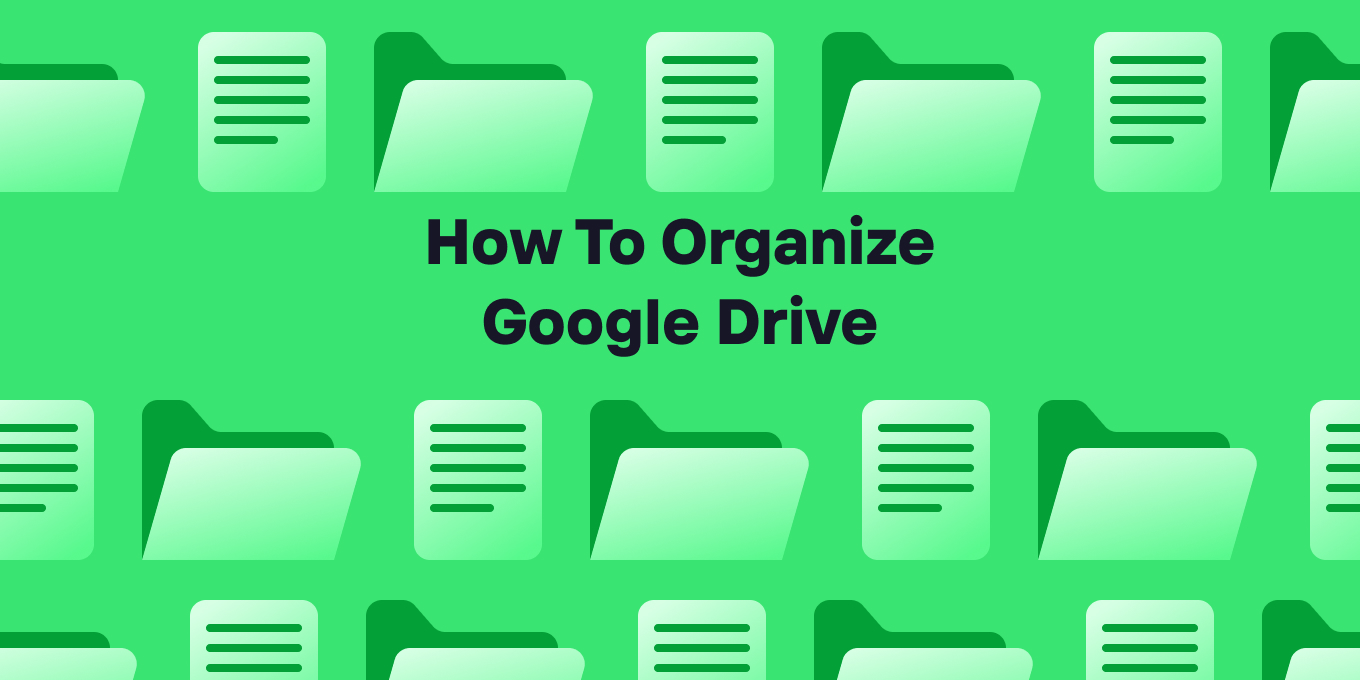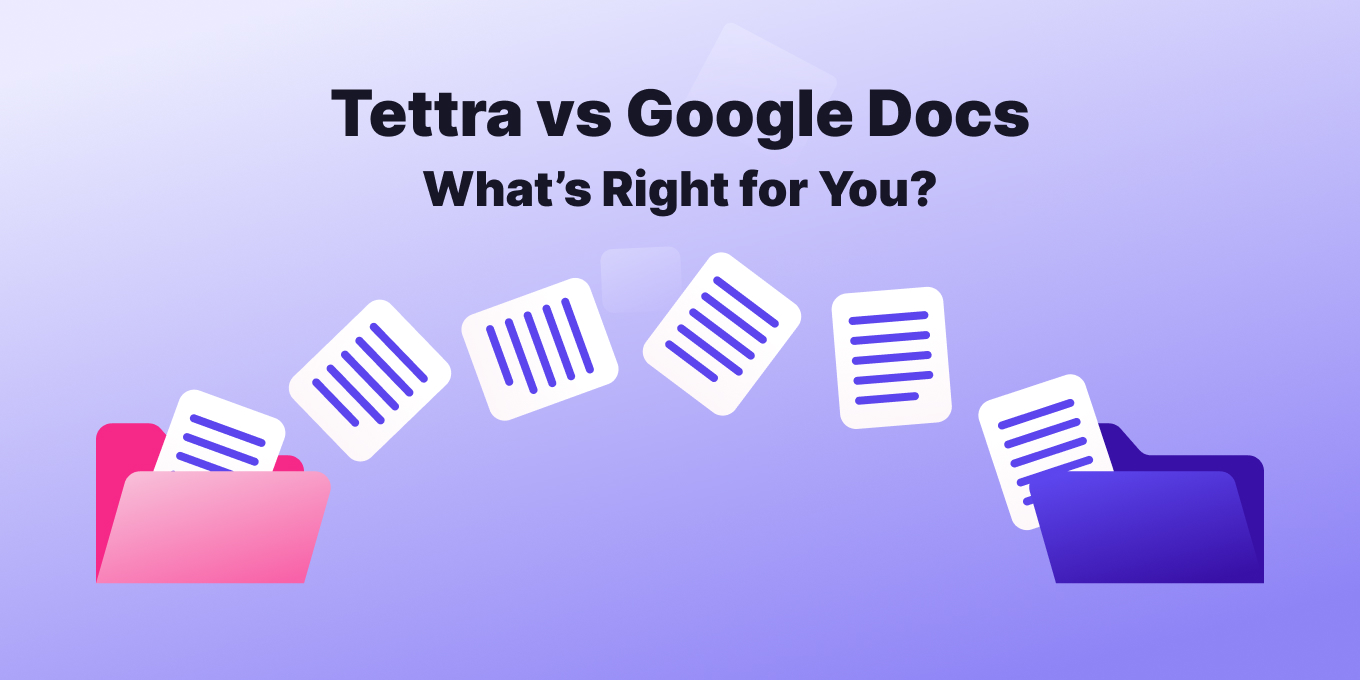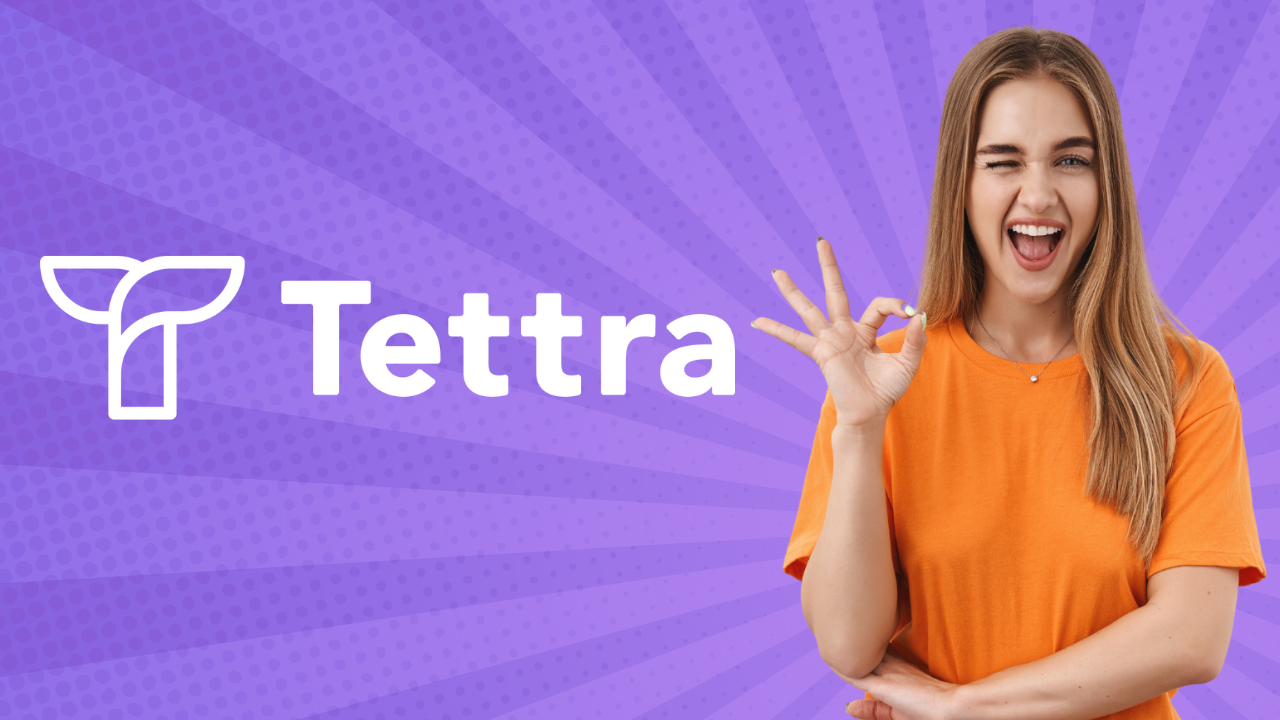Let’s unravel the lesser-known features of Google Docs.
Despite being a staple in many work environments, Google Docs harbors untapped potential that can revolutionize your productivity and team collaboration.
From real-time collaborative editing to comprehensive version history, Google Docs offers features that make documentation more streamlined and communication more effective.
- TIP: Link Google Docs to Tettra for an efficient, seamless network of docs & company information
Join us as we delve into these Google Docs features and other integrations to supercharge your team’s productivity and knowledge management.
⭐️ More about docs from Tettra:
Feature 1: Set Pageless Views
The pageless view feature is an absolute game-changer in document editing.
Rather than dealing with pages, one can now write on an infinitely long digital plane. This view option is especially useful when working with large images or drafting content for web project purposes. Activating the pageless view is incredibly easy.
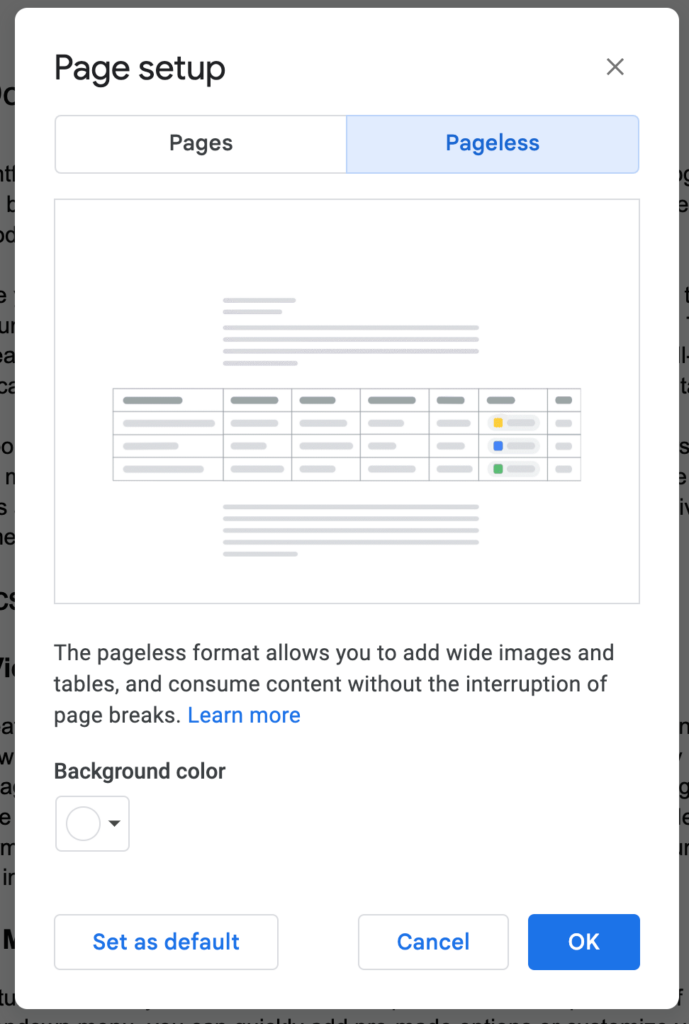
All the user requires is:
- Clicking File.
- Clicking Page setup.
- Clicking the Pageless tab.
- Pressing OK to confirm.
As a bonus, users can also click Set to default, ensuring all documents created are automatically set in pageless mode.
Feature 2: Customize Dropdown Menus
Dropdowns are an intuitive and easy-to-use feature that simplifies the user experience of any project or document. With a dropdown menu, you can quickly add pre-made options or customize your own to ensure they accurately reflect the context of your projects or documents.
To use a dropdown element:

- Type @dropdown or go to the Insert tab in the top menu and select ‘Dropdown.’
Once done, you can easily organize data by inserting whatever options you want into it and removing those that don’t exist or are obsolete. It is incredibly helpful for tracking projects, reviewing their progress, and assigning specific tasks for each document section in no time!
Feature 3: Draft Emails
Google Docs has released a new feature that allows users to compose an email within the application and send it via a Gmail account.
This saves time as there is no need to open up Gmail to send an email message. All of the elements of Google Docs are available in the body of the message, meaning you can now place tables, dropdowns, and file links directly into your emails!
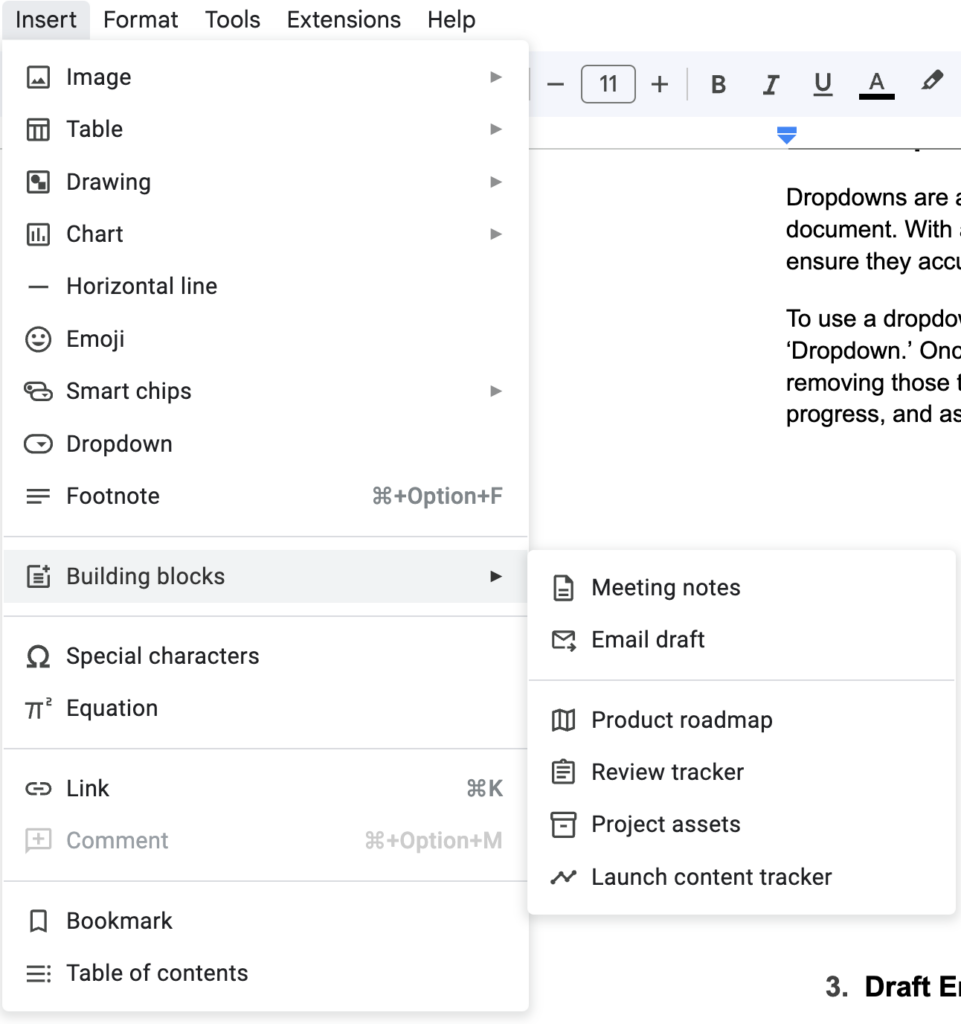
How to access this new feature:
- Click Insert in the top menu bar and hover over Building Blocks.
- Select Email Draft, which brings up a blank template for your message.
- Formatting will be applied when exported through Gmail!

Feature 4: Meeting Notes
With the introduction of meeting note templates on Google Docs, it has become even easier to stay organized and ensure everyone knows what’s happening.
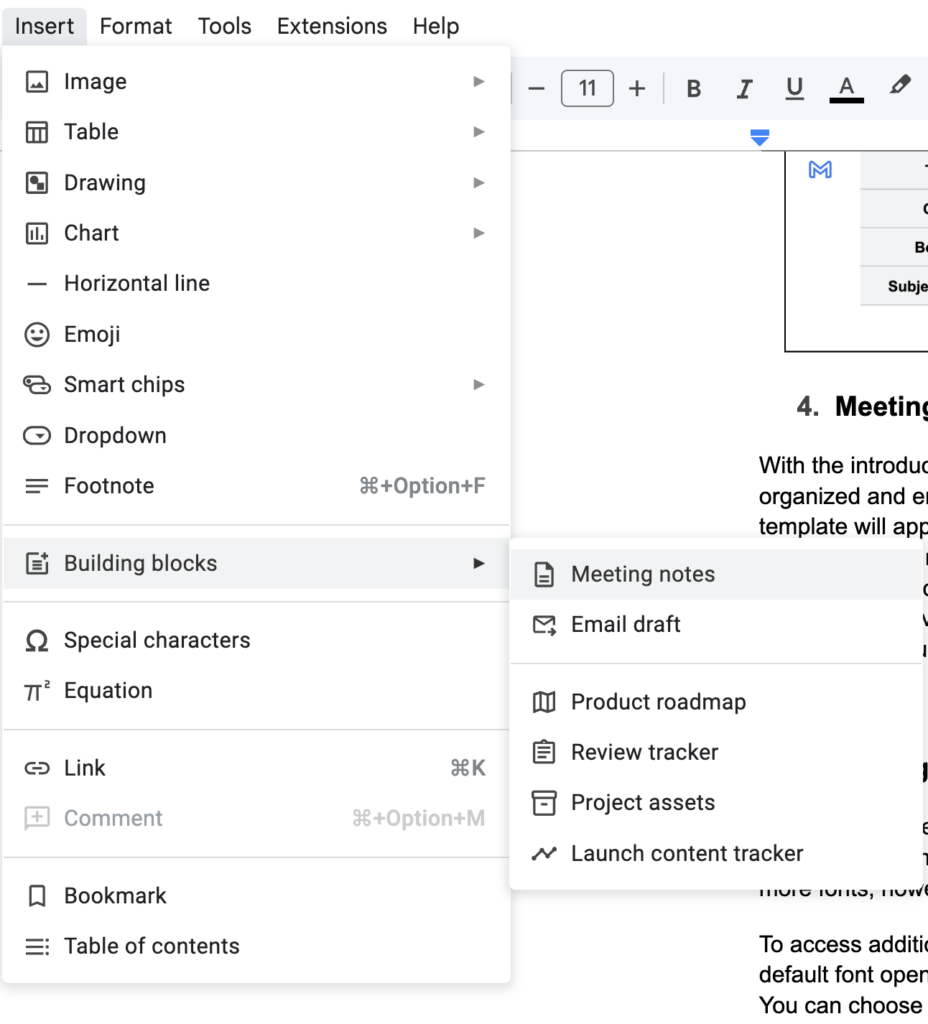
- Select an event from your calendar, a template will appear, giving you an organized structure.
- Write down attendees and take detailed notes about the meeting itself.
- If any action items need to be completed, you can easily fill out a checklist for reference and attach these meeting notes to the event in Google Calendar.
This type of organizational automation is invaluable for businesses, teams, and other organizations to ensure everyone is up-to-date with topics discussed during meetings and get tasks done on time.
Feature 5: Adding Fonts
When you create a document with Google Docs, you are given many options for the font of your text.
You can choose from over two dozen native fonts in the dropdown list at the top of your editing toolbar. Even more fonts, however, are available to add with just a few clicks.
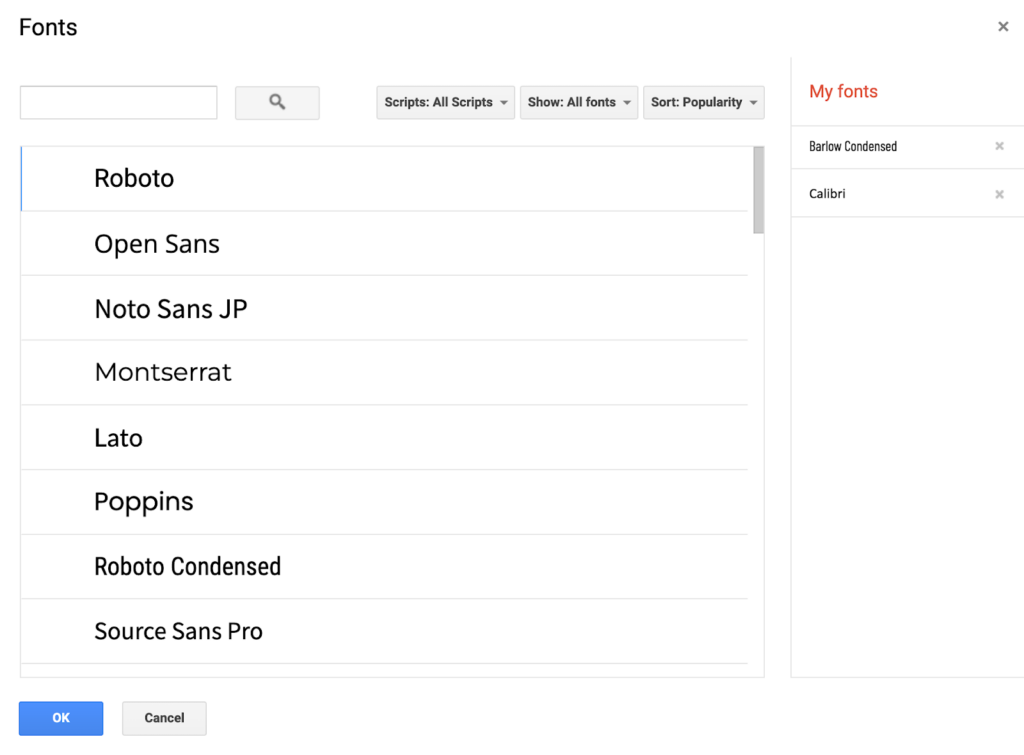
To access additional fonts:
- Simply click the third box from the left on your editing toolbar.
- When your default font opens up, select “More fonts…” from the list, and it will bring up a window with more choices.
- You can choose from additional unique and modern styles, such as Fira Sans and Roboto Slab, to give your documents an eye-catching look.
Each font is fully customizable so that you can make it match perfectly with any project or presentation you have in mind. With so many options available, finding the right font for whatever task you’re working on is now easier than ever.
Feature 6: Adding Checklists
Checklists are a great way to stay organized, and with the latest addition to Google Docs, it’s easier than ever.
With the click of one button, you can add checkboxes directly to your documents, making tracking completed tasks easier.
You no longer have to color-code your list or try to remember what a number stands for. Simply tick off the box when something is done.
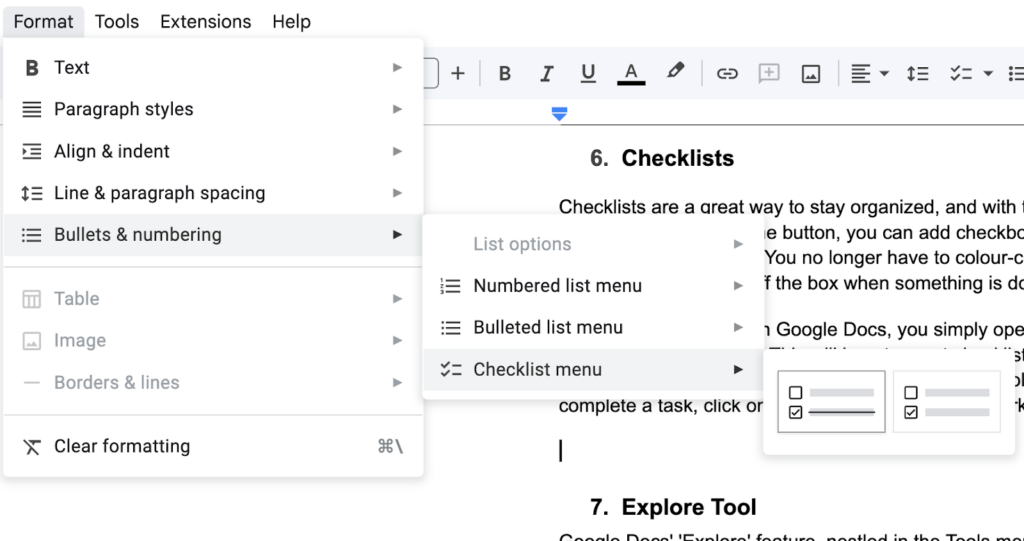
To activate this feature in Google Docs:
- Simply open square brackets by selecting Format
- Click on Bullets & Numbering
- Select Checklist. This will insert a neat checklist icon into your document with room for as many tasks as possible. Add a clickable checkbox on the toolbar if only a few tasks need completion.
- To complete a task, click on the square, and it will be marked as finished.
Feature 7: Explore Tool
Google Docs’ “Explore” feature, nestled in the Tools menu, is a powerful resource for conducting Google searches without leaving your document.
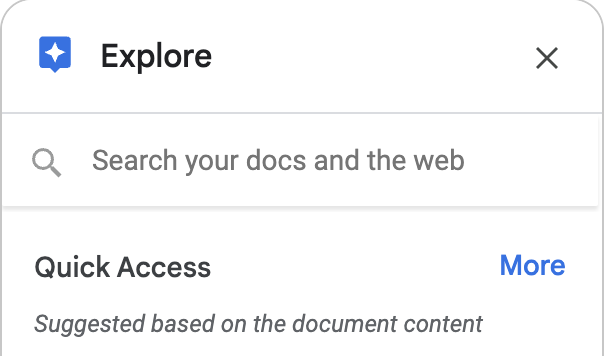
To use this function:
- Click on Tools
- Select Explore
This eliminates the need to switch between tabs in your browser, improving your focus and productivity. Furthermore, it suggests relevant images based on your content, which you can effortlessly insert into your document to enhance visual appeal. The ‘Explore’ tool even offers a citation functionality that automatically generates bibliographic entries in the chosen format, thereby streamlining your research and academic projects.
Feature 8: Voice Typing
A hidden gem in Google Docs is the Voice Typing tool. Located under the Tools menu, this feature converts spoken words into written text, making it a boon for those who find verbal communication more comfortable or for individuals with physical disabilities that make typing challenging.

To use this feature:
- Click on Tools
- Select Voice Typing
Voice Typing is surprisingly accurate, understanding a wide range of spoken commands for punctuation and formatting. This way, you can efficiently dictate your entire document, from words to commas, without touching the keyboard.
Feature 9: Version History
The Version History feature, accessible from the File menu, is indispensable when collaborating on a document.

To use this feature:
- Click on File.
- Click on Version History.
- Click on See Version History.
It offers a detailed log of all document versions, specifying the changes made, the person who made them, and the time of the change. This ensures transparency in collaborative projects and allows clarity over edits. Moreover, if an alteration doesn’t quite work out, the Version History will enable you to restore an earlier document version, ensuring peace of mind during collaborative edits.
Feature 10: Custom Shortcuts
Google Docs supports the creation of custom keyboard shortcuts, which can significantly enhance your workflow efficiency.
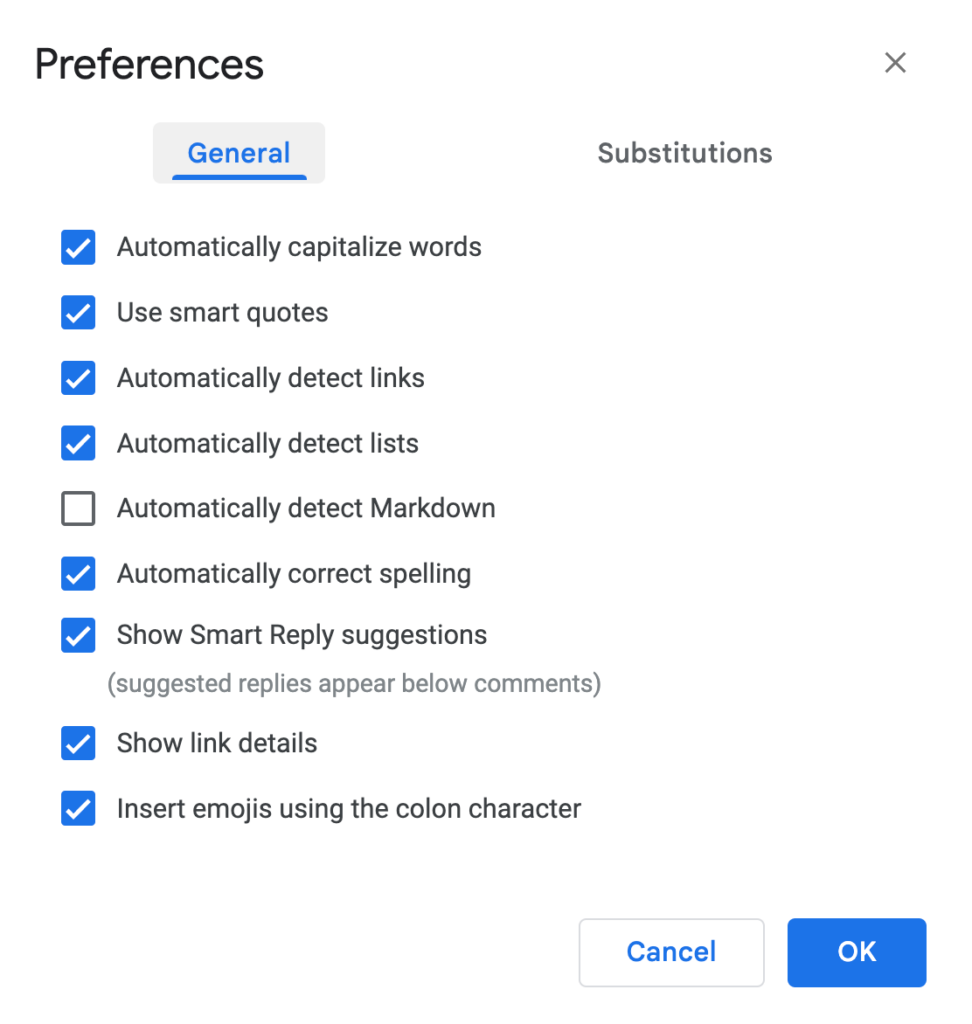
To use this feature:
- Click on the Tools menu
- Click on ‘Preferences’
- Define personalized shortcuts, streamlining routine actions and reducing your dependence on the mouse.
Creating shortcuts for your most frequently used commands can speed up your document creation and editing process, making Google Docs work for you.
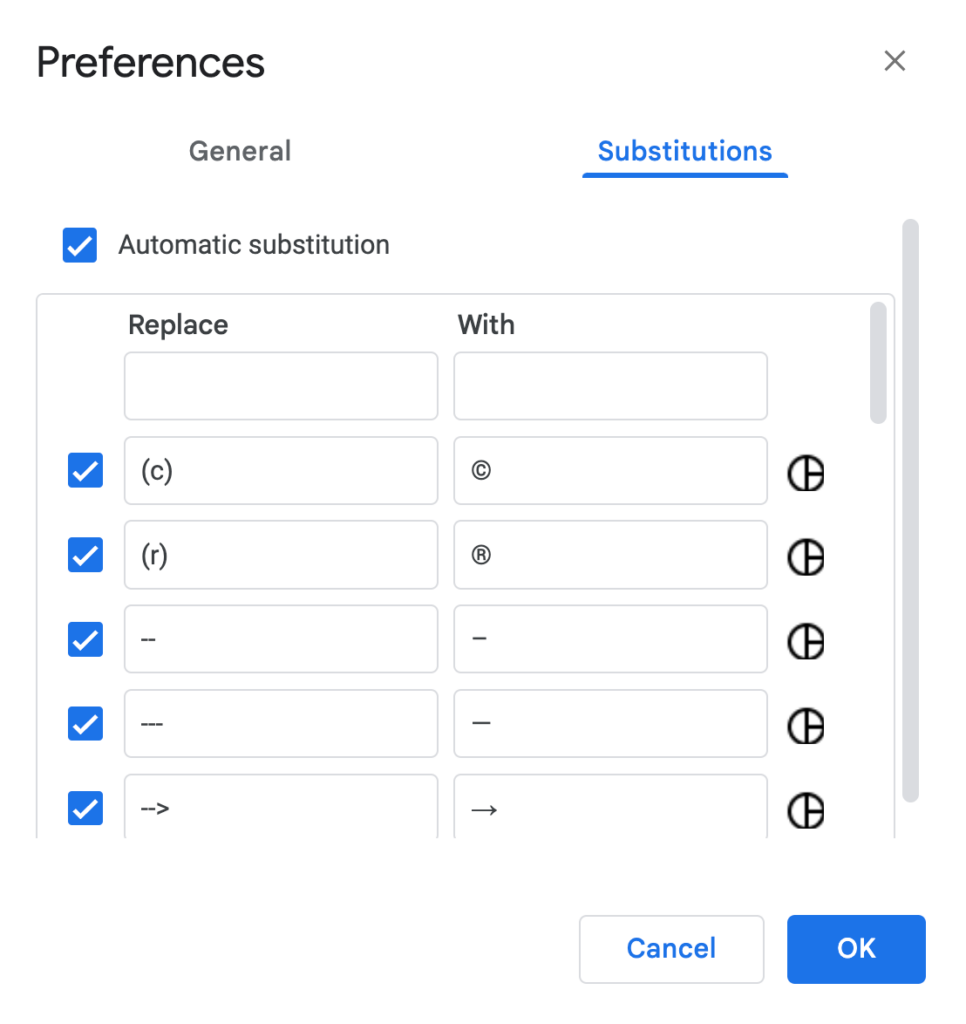
Feature 11: Send Docs as Attachment Directly from Google Docs
While Google Drive’s shareable links are a popular way to share documents, Google Docs also provides the option to email the document as an attachment directly from the platform.
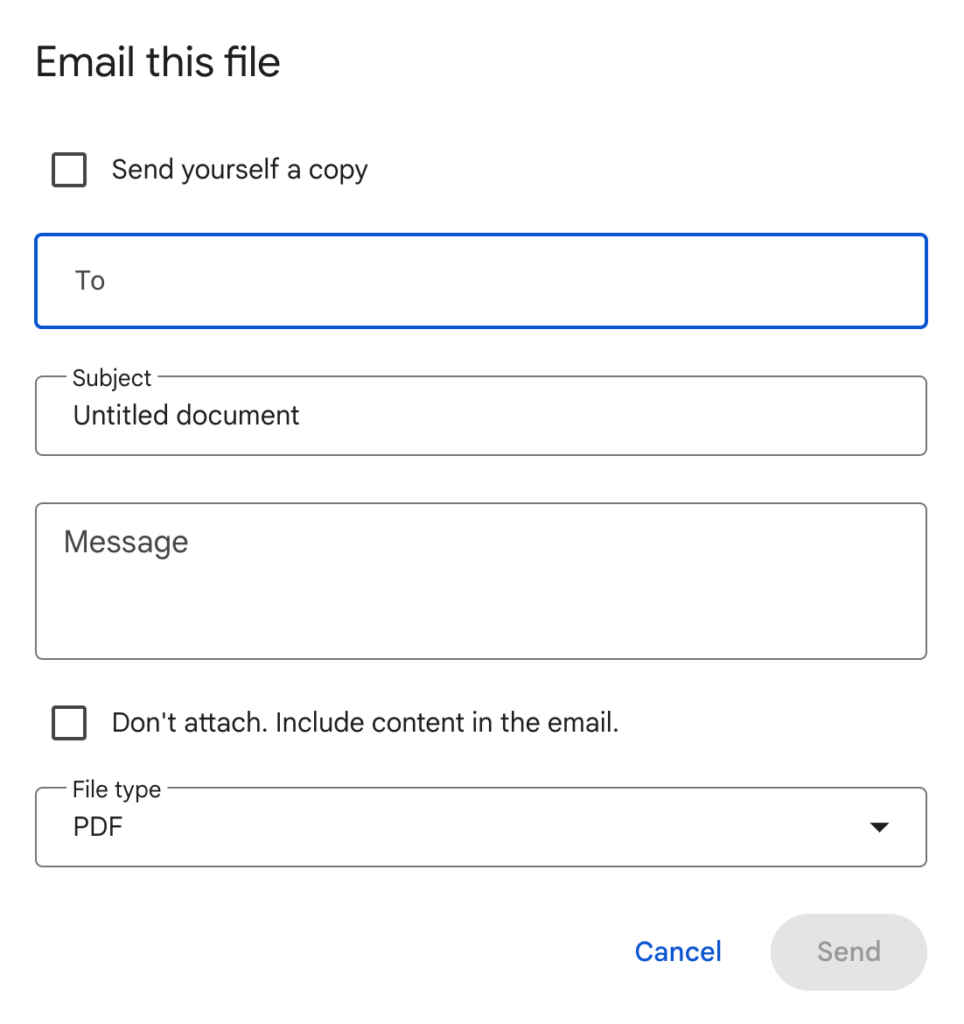
To use this feature:
- Click on the File menu.
- Select Email.
- Click on Email this file.
This supports formats like PDF and Word, catering to recipients who may not use Google Docs. This flexibility allows you to communicate and share documents in a way that suits each recipient, promoting smoother, more effective collaboration.
Feature 12: Table of Contents
To use the Google Docs “Table of Contents” feature:
- Click on the ‘Insert’ menu.
- It automatically generates a navigable table of contents based on the headers and subheaders in your document, improving readability and navigation.
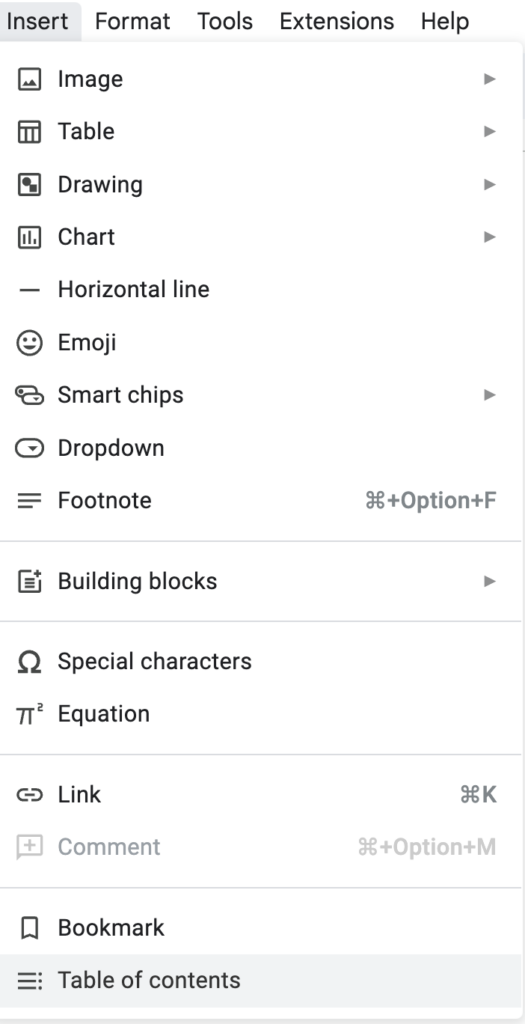
This is a must-use for longer documents. This tool can drastically enhance the reader’s experience with lengthy documents or reports, enabling them to jump to specific sections of interest. The Table of Contents automatically updates as you edit the document, ensuring it always reflects the current contents.
Feature 13: Templates
Google Docs boasts an extensive library of templates for various document types, ranging from resumes to project proposals. To use the templates;
- Access it from the Google Docs start page.
- Select the right template for you.
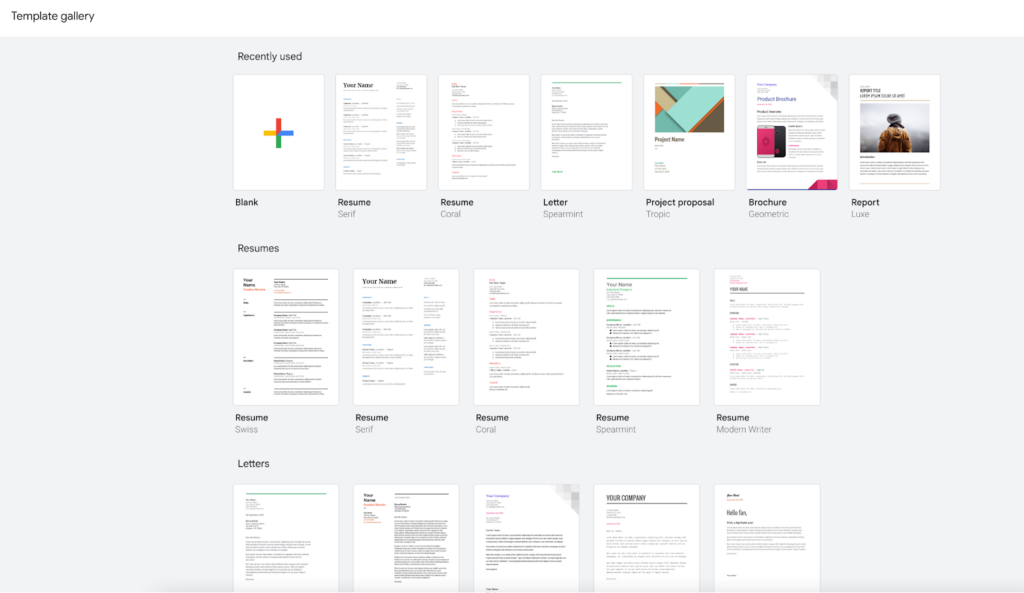
These templates can save you significant time and provide a strong starting point for your work. Using these professionally designed layouts, you can focus more on the content and less on formatting. Each template is fully customizable, allowing you to tailor the design to your specific needs and preferences.
Feature 14: Bookmarking and Linking
Google Docs supports the creation of bookmarks within a document, a feature that is often overlooked but can dramatically improve navigation in lengthy documents. These bookmarks can be used to create internal links within the document, allowing readers to jump to specific sections or references.
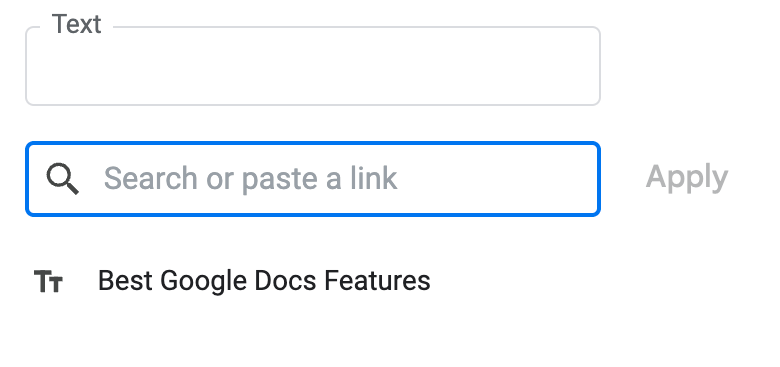
To use this feature:
- Click on the “Insert” menu.
- Click on Bookmark.
This feature is especially useful for complex documents with multiple related sections. In addition, you can link these bookmarks to external documents in Google Drive, making it easy to reference supporting information or related projects, creating a seamless network of information for your team or readers.
Feature 15: Emoji Reactions
New emoji reactions feature in Google Docs is a refreshing and informal counterpart to the usual comments. Users can now add emoji reactions to existing comments. This innovative feature promotes increased collaboration, offering a swift and creative way for users to convey their views on the document content.
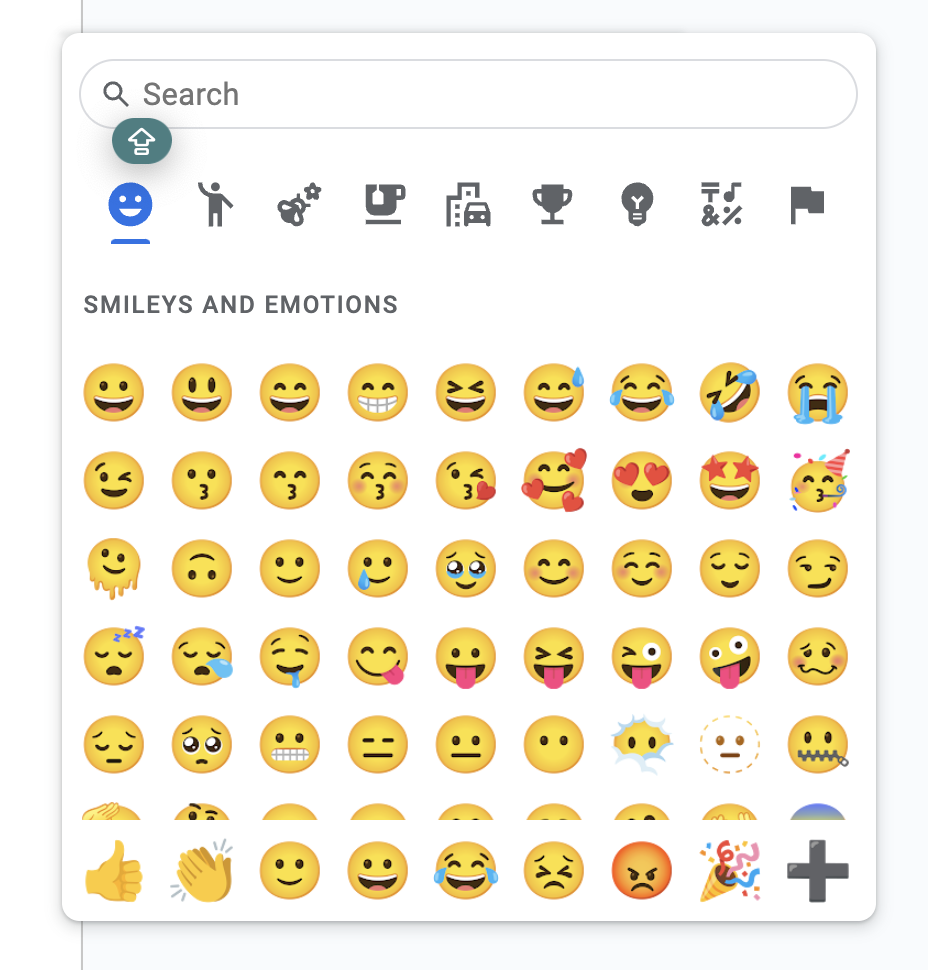
To use this feature:
- Select the comment you want to react to.
- On the right margin, click Add emoji reaction. Go to Insert Emoji reaction.
- Choose the emoji you want to add.
Sharing and obtaining feedback is central to the collaborative process in Google Docs, and with this new emoji reaction capability, expressing opinions becomes even more interactive and relaxed.
Feature 16: Set Expiration Dates
When collaborating with external partners, ensuring the security and timely access to your Google Drive files becomes paramount. The platform allows you to set specific expiration dates for file access, granting you control over how long someone can view or edit a document or folder.
To use this:
- Navigate to the desired file in Google Drive, click “Share,” locate the user, and beside their name, click the downward arrow, followed by “Add expiration.”
- Choose the default 30-day expiration or adjust by clicking “Edit” beside “Access expires,” selecting your preferred date, and finally clicking “Done” and “Send.” To remove any set expiration, simply click “Remove expiration.”
Understanding Access Roles with Expirations:
- For individual files: Expiration dates can be added for roles like viewers, commenters, editors, and even published viewers if the file supports this option.
- Regarding folders: Expiration can be set for viewers and commenters. If an editor’s access on a folder is set to expire, their status transitions to “Viewer.” Nonetheless, their role can be modified to “Commenter” while preserving the expiration date.
How To Use Tettra with Google Docs
Many teams that need better search functionality and organization than Google Docs turn to Tettra as an alternative.
With Tettra, you can add Google Docs external links, and have them searchable with the rest of your most important documents.
Tettra has great search functionality and a simple interface with verification, stale content, and update requests that Google Docs just doesn’t have.
Make Tettra your internal knowledge base and wiki instead of Google Docs. It’s free to start.
Take some time to explore these hidden gems in Google Docs, and you’ll soon be navigating the platform like a pro, achieving more efficient and effective communication and documentation.

